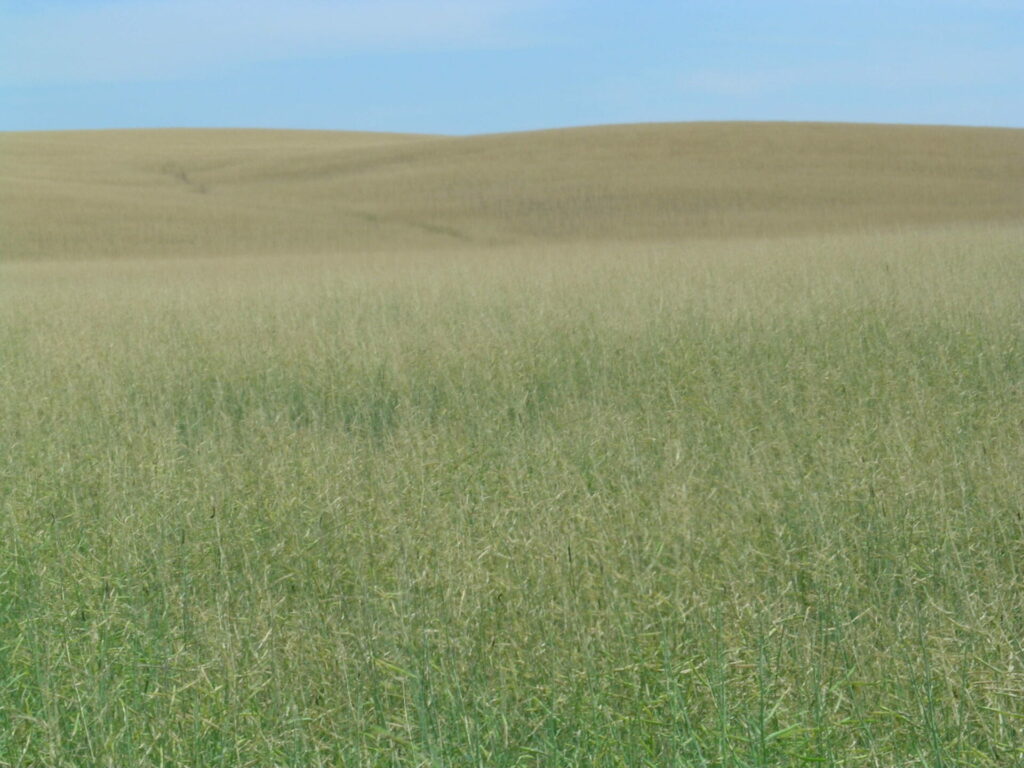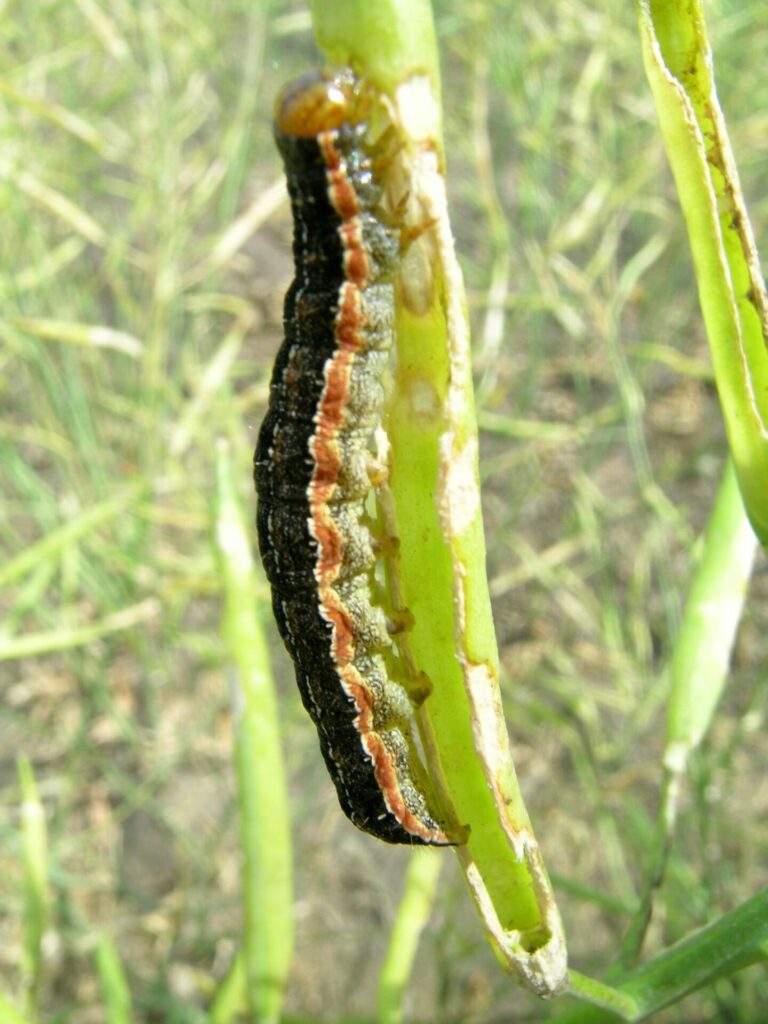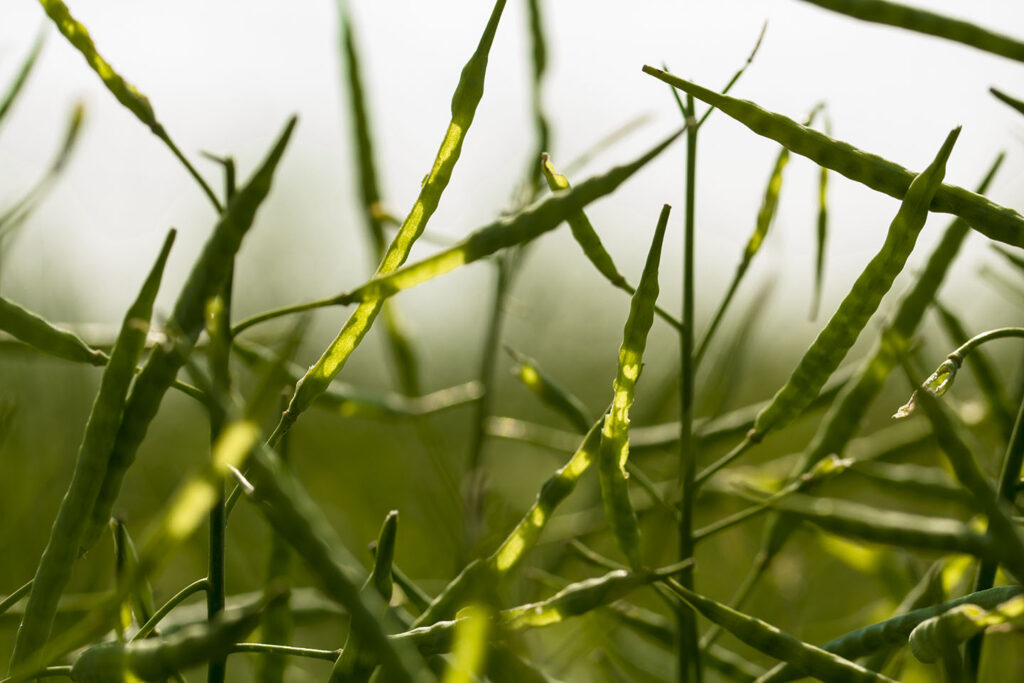During bertha armyworm outbreaks, canola and mustard crops typically experience the most damage and highest economic losses. However, bertha armyworm also eat alfalfa, peas, quinoa, flax, potatoes, and other crop and weed plants. Adult moths do not damage crops. Larvae consume green plant tissues using their chewing mouthparts.

Bertha armyworm larvae are cause for concern when they occur in high numbers when canola pods are developing and maturing. This is because ‘mature’ bertha armyworm larvae (e.g., 5th and 6th instars) will start eating developing canola pods. Pod damage includes debarking, which can result in pod shatter before or during harvest. Bertha armyworm larvae can also directly consume the developing seeds. Bertha armyworm larvae can also clip flowers and bolls off of flax plants.


The Prairie Pest Monitoring Network, Alberta Agriculture and Irrigation, Saskatchewan Ministry of Agriculture and Manitoba Agriculture coordinate an annual monitoring program for bertha armyworm using pheromone traps. The 2024 monitoring season started the week of June 10 and will continue until late July. Thank you to all of the volunteers across the prairies who are hosting bertha armyworm pheromone traps!
The number of bertha armyworm moths captured in the pheromone traps serves as an estimate of local risk. Watch for information about the bertha armyworm monitoring program from the PPMN Weekly Updates and the provincial insect updates. If trap catches indicate possible risk, then scout canola crops for larvae using the bertha armyworm monitoring protocol found on the PPMN Protocol page. Information to calculate economic thresholds can also be found in the monitoring protocol.

More information about bertha armyworm is available from the Canola Council of Canada, Alberta Agriculture and Irrigation, Manitoba Agriculture, and the Saskatchewan Ministry of Agriculture. You can also read about bertha armyworm in Field Crop and Forage Pests and their Natural Enemies in Western Canada, available in English and French on the PPMN Field Guides page.
